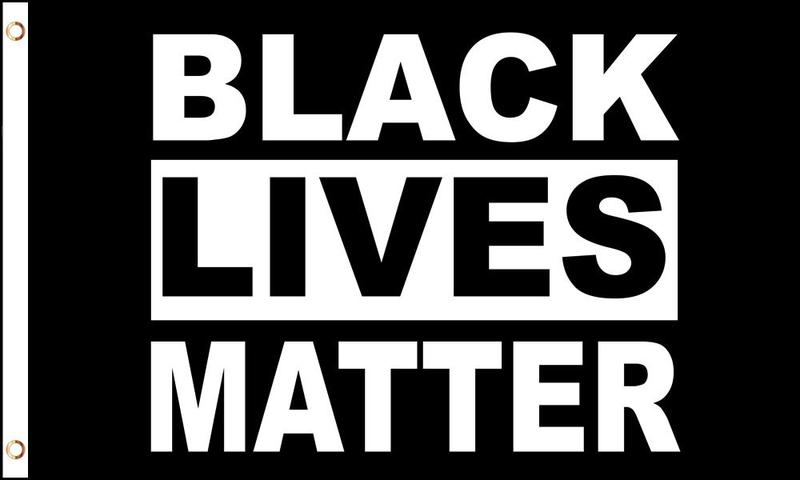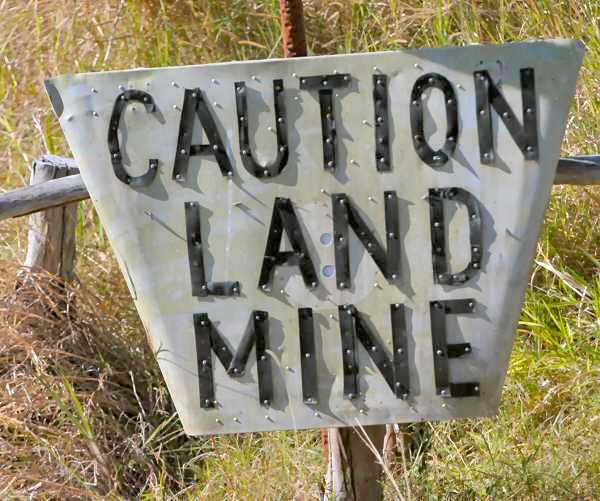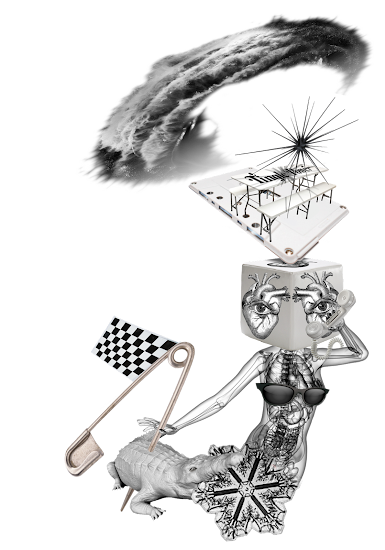This 2018 essay was updated/revised in 2020.
Last weekend, as we drove thru the countryside of my state, my wife pointed to a pickup truck flying two large flags and asked if I knew what the black and white one represented. Although I'd never seen an "American flag" with: black bars instead of red, a black field behind the stars instead of blue, and a horizontal blue bar thru the middle — I was able to make a reasonably informed guess (because the other flag in the back of the pickup was a confederate battle flag).
 There are a few variations of banners with these blue lines. Even though they range from those with solid black backgrounds, or combined with the stars and bars, or the union jack (as well as with the aforementioned stars and stripes), I've discovered one strong common denominator: all appear to have been created in the last five years — after 2013 — when the Black Lives Matter (BLM) movement began.
There are a few variations of banners with these blue lines. Even though they range from those with solid black backgrounds, or combined with the stars and bars, or the union jack (as well as with the aforementioned stars and stripes), I've discovered one strong common denominator: all appear to have been created in the last five years — after 2013 — when the Black Lives Matter (BLM) movement began.
 For many decades, the descriptor: 'thin blue line' has been used as a simile. By referring to the police force as the "front line" of law enforcement, the phrase successfully brings to mind a line of blue-uniformed officers fighting valiantly to separate and protect law abiding citizens from criminals. I joined the Military Police in 1985, but it wasn't until 1990 — with the film The Thin Blue Line — that I learned this term was a label for police.
For many decades, the descriptor: 'thin blue line' has been used as a simile. By referring to the police force as the "front line" of law enforcement, the phrase successfully brings to mind a line of blue-uniformed officers fighting valiantly to separate and protect law abiding citizens from criminals. I joined the Military Police in 1985, but it wasn't until 1990 — with the film The Thin Blue Line — that I learned this term was a label for police.
 If someone wants to show police solidarity and also wants to display their support in the form of a banner (on the back of their Ford F150—as an example) they should consider a emblem from the Fraternal Order of Police (FOP). This organization is over a century old, advocates for the safety of law enforcement officers, and the FOP logo contains no words intended to usurp the message of another group.
If someone wants to show police solidarity and also wants to display their support in the form of a banner (on the back of their Ford F150—as an example) they should consider a emblem from the Fraternal Order of Police (FOP). This organization is over a century old, advocates for the safety of law enforcement officers, and the FOP logo contains no words intended to usurp the message of another group.
The number of flags, banners, and signs which bring universal scorn to those who display them publicly is growing. Included in this list are the signs of the "Church" from Westboro, Kansas; the flag of the National Socialist German Workers' Party (the Nazi Swastika); and some variants of the US Confederate Battle Flag (Confederate Southern Cross). Specious claims of "pride in one's heritage" are no longer palatable by the masses. Since there are still many who want to publicly display their hatred for others, the white supremacists have recently adopted the thin blue line flag, which provides a superficially plausible explanation (claiming to support the police) while actually displaying their hate-filled message (which is that black lives don't matter to them).


are the same as
Last weekend, as we drove thru the countryside of my state, my wife pointed to a pickup truck flying two large flags and asked if I knew what the black and white one represented. Although I'd never seen an "American flag" with: black bars instead of red, a black field behind the stars instead of blue, and a horizontal blue bar thru the middle — I was able to make a reasonably informed guess (because the other flag in the back of the pickup was a confederate battle flag).
 There are a few variations of banners with these blue lines. Even though they range from those with solid black backgrounds, or combined with the stars and bars, or the union jack (as well as with the aforementioned stars and stripes), I've discovered one strong common denominator: all appear to have been created in the last five years — after 2013 — when the Black Lives Matter (BLM) movement began.
There are a few variations of banners with these blue lines. Even though they range from those with solid black backgrounds, or combined with the stars and bars, or the union jack (as well as with the aforementioned stars and stripes), I've discovered one strong common denominator: all appear to have been created in the last five years — after 2013 — when the Black Lives Matter (BLM) movement began. If someone wants to show police solidarity and also wants to display their support in the form of a banner (on the back of their Ford F150—as an example) they should consider a emblem from the Fraternal Order of Police (FOP). This organization is over a century old, advocates for the safety of law enforcement officers, and the FOP logo contains no words intended to usurp the message of another group.
If someone wants to show police solidarity and also wants to display their support in the form of a banner (on the back of their Ford F150—as an example) they should consider a emblem from the Fraternal Order of Police (FOP). This organization is over a century old, advocates for the safety of law enforcement officers, and the FOP logo contains no words intended to usurp the message of another group. The number of flags, banners, and signs which bring universal scorn to those who display them publicly is growing. Included in this list are the signs of the "Church" from Westboro, Kansas; the flag of the National Socialist German Workers' Party (the Nazi Swastika); and some variants of the US Confederate Battle Flag (Confederate Southern Cross). Specious claims of "pride in one's heritage" are no longer palatable by the masses. Since there are still many who want to publicly display their hatred for others, the white supremacists have recently adopted the thin blue line flag, which provides a superficially plausible explanation (claiming to support the police) while actually displaying their hate-filled message (which is that black lives don't matter to them).
- The Thin Blue Line Flag is equivalent to the Blue Lives Matter banner.
- "Blue Lives Matter" has one purpose: opposing the "Black Lives Matter" message.
- "Black Lives Matter" opposes violence and racism against people of color by the police.


are the same as
updated/revised: June 2020







.jpg/1200px-The_big_brass_ring_(5970089724).jpg)



























































